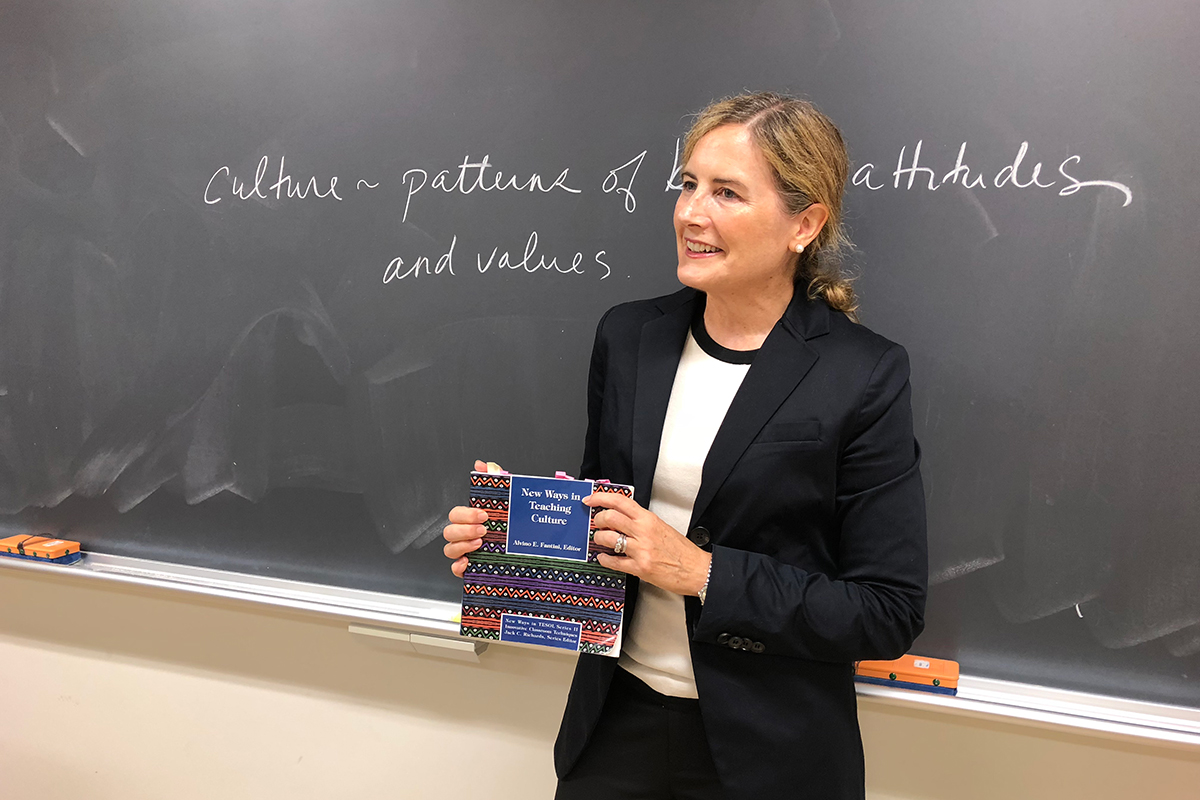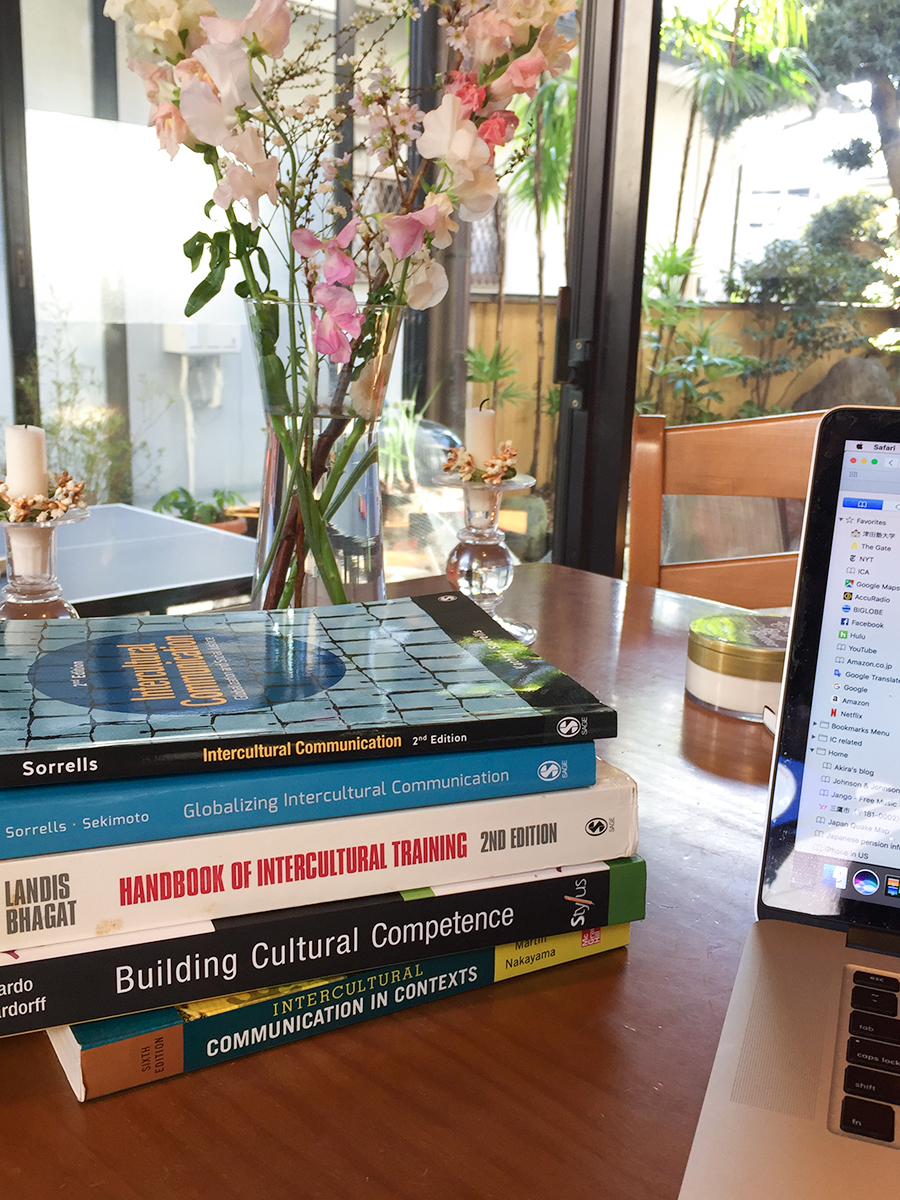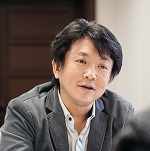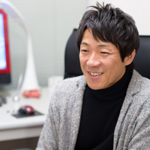人生と学び
人生と学び #23 - Let’s try to learn about the world around you from a variety of cultural perspectives!!
津田塾大学では、精読や作文など英語の必修科目の多くは英語で行われます。私は入学するまでそのことを知りませんでしたが、今回、授業の雰囲気を読者のみなさまにも感じていただきたいと思い、英語でインタビューを行い、そのまま英語の記事をリリースすることとなりました。
今回インタビューをしたのは、学芸学部英語英文学科のElizabeth I. Dow准教授。異文化コミュニケーション理論をご専門とする先生で、20年以上津田塾大学で教えてくださっています。インタビューでは、ご自身の大学時代の学びを振り返っていただいただけでなく、現在担当されている授業について答えてくださいました。異文化コミュニケーション理論の観点から、日本とアメリカにおけるジェンダーについても語っていただきました。そもそも異文化コミュニケーション理論とは何だろうと思っている方、また英語の苦手な方でも、これを機に異文化について考えてみませんか。
At Tsuda University, like other universities, since May, almost all classes are given online, using the application of “Zoom,” in order to prevent the spread of COVID-19. Probably, many students, especially freshmen, are disappointed to take virtual classes even now, because we aren’t able to communicate with each other easily. On such an occasion, it may be enjoyable to read some articles about Tsuda in plum garden, in order to feel relaxed. This time, I interviewed Associate Professor Elizabeth I. Dow, who teaches mainly Intercultural Communication.
大学時代の学び、異文化コミュニケーション理論との出会い
—Please tell me your brief history.
I was born in Wellesley, Massachusetts, outside of Boston. Part of my family history is to “go West” which I did for university (Colorado) and Graduate school (San Francisco). Of course, I needed to continue further West, and with my interest in Japanese culture, I came to Japan over 25 years ago. I fell in love with the culture, my work at Tsuda, and a Japanese man, so I never left!
—How were your school days?
I was lucky to find my passion of studying Intercultural Communication as an undergraduate. I studied that topic with great enjoyment, but also enjoyed taking a lot of different classes, including Art History, Film, and Anthropology. I was always asking classmates, “What’s your favorite class? Who’s your favorite teacher?” and if I could take the recommended class, I would. I think this helped me understand what makes a great class and creates the kind of teacher I aspire to be. Before graduate school, I lived in San Francisco for 3 years, and worked at an art auction gallery, which sells paintings and furniture. While I was selling art, I learned how much we can learn about culture through a variety of art forms. I think art is one form of non-verbal communication.
担当授業への想い
—What classes do you teach now? Please tell me the contents of the classes.
I have continued to teach Intercultural Communication Theory for almost 20 years now. Times have certainly changed since I first started teaching the course and while the fundamental theory behind how to build good relationships across differences remains the same, in this day and age of increasing diversity and a global call for equality, it is more and more important to consider cultural context, identity and power dynamics. These kinds of topics are very important to understand current events like “Black Lives Matter” or the “#Me Too” movement.
I also teach Freshman Seminar, where I cover some of the basic ideas of intercultural communication and I love the enthusiasm of first year students. They always bring fresh new ideas, and I really love to see them adapting to life at Tsuda.
In my Third year seminar, currently I’m teaching my students how to teach culture and facilitate intercultural communication competency in the language classroom. When you are learning a language, you learn not only the language, but also the cultures set behind the language. For students who want to be an English teacher, it is important for them to become teachers who can help their students learn how to communicate with people from different cultures, including avoiding the use of stereotypes and paying attention to communication style. With the increasing diversity of Japan, this skill is becoming more and more important.
異文化コミュニケーション理論とは
—Please tell me your research theme: Intercultural Communication Theory.
Currently I’m working on analyzing the “Critical Incidents” reported by students on the summer language programs. These are notable intercultural experiences which serve to illustrate what kind of cultural experiences students are having, and how we can use such experiences to enhance intercultural competency through pre-departure or other training programs. I also have just finished a research project with one of my former students, who is now a professor in the US. We interviewed Japanese women in search of how gender ideology is transmitted through family discourse, especially as it relates to working mothers in Japan. Lastly, I hope to start some kind of online intercultural exchange between my seminar students and students in the US. Although students cannot study abroad at present, it is really important to keep the intercultural exchanges active!
日米のジェンダーを異文化コミュニケーション理論から考える
—What do you think about gender against women in Japan? I think it’s different between Japan and America.
Well, I think it’s relatively rare to find stay at home mothers in the U.S. These days, maybe some women will stay home when their child is young, but for the most part, women are working in a variety of ways in society. All of my American friends have worked while raising children.
I think that gender roles are changing, very dynamically, especially in Japan. Every culture has somewhat different ways of thinking about gender. Women who were a part of traditional gender roles are now having more choices. I think that Japanese women are pulled in two directions. They still have an eye on traditional gender roles, where the ideal mother is making delicious “obento” at home, but they are also looking in another direction of being career women and finding what they want to do to succeed and make a difference in society. Although it’s kind of confusing, it’s also an opportunity to create new ways to work. Women have to navigate different gender ideologies. And that's an opportunity to craft and be creative about who they want to be.
—What did you take care of, when you conducted classes online?
I tried to look at online classes as a new learning opportunity for both students and teachers, trying to stay positive even though it was hard work for everyone. I held synchronous zoom classes for all of my class periods, trying to cover the same material as in face-to-face classes. I think it worked well and there were some merits. Students were very active in the breakout rooms* during discussions, and the chat function allowed for students to answer questions in my large lecture class (of 200 students). Normally students are too shy to speak out in a face-to face lecture class, so in some ways, the class was more interactive. However, I look forward to going back to face-to-face classroom teaching soon.
*the breakout room-one of the functions of the application, “Zoom.” You can talk with some people in a small group.
学生へのメッセージ — Try to learn about the world!!
—Please tell me some messages for students.
During your university days and beyond, try to learn about the world around you from a variety of cultural perspectives. This knowledge allows you to be more conscious about how you “construct” and live your life. Take the time to communicate with your classmates about the world around you, including Japanese culture. By sharing your ideas with others, you not only learn new ideas and build relationships, but you also learn about yourself. Especially in work and marriage, active communication and appreciation is very key. Try to be communicative, and creative at home and in the workplace.







